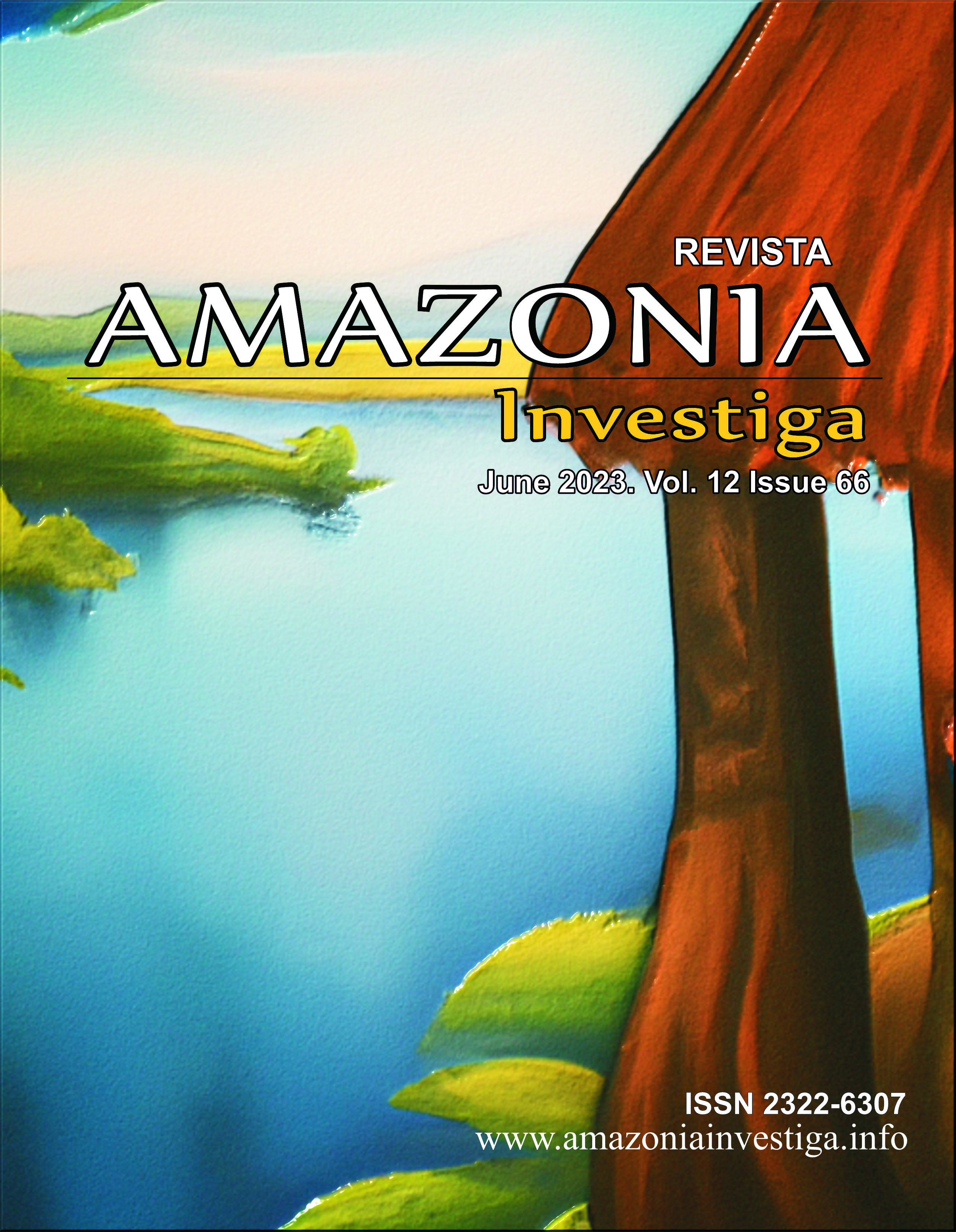Using QR codes to develop EFL learners’ pronunciation skills and expand vocabulary knowledge
Publicado 2023-07-30
Palabras clave
- QR codes, vocabulary enhancement, pronunciation accuracy.
Cómo citar
Resumen
Developments in technology have affected education in an unprecedented way. The affordability of mobile technologies has prompted educators to implement mobile enriched instructions in classes. In this regard, QR codes have received much attention at educational institutions for their advantages, such as being flexible, handy, and cost-free, particularly in the last two decades. For this purpose, the current study was carried out at TISHK International University in Erbil, Iraq, on fifty advanced English students during the 2022-2023 academic year, spanning 6 weeks. The participants were chosen via stratified random sampling method. Control group students received traditional education, while experimental group students were exposed to QR code-based instruction through recorded audio tracks, videos, presentations, and e-exams. The findings, collected through exams and analyzed using SPSS 25 in this quantitative study, revealed that QR code-based instruction significantly improved students' vocabulary knowledge and pronunciation accuracy, with p-values of .002 and .003, respectively. The findings of this study can have implications for education stakeholders who aim to devise novel ways to enhance students' levels with web-enhanced tools like QR codes.
Descargas
Citas
Alzubi, A. (2019). Teachers’ perceptions on using smartphones in English as a foreign language context. Research in Social Sciences and Technology, 4(1), 92-104.
Arikan, Y. D., & Ozen, S. O. (2015). A learning environment for English vocabulary using Quick Response codes. Educational Sciences: Theory & Practice, 15(2), 539-551. https://doi.org/10.12738/estp.2015.2.2139
Bakla, A. (2018). Quick response codes in foreign language instruction: Practical ideas and strategies. Journal of ?nönü University Faculty of Education, 19(3), 749-762.
Balintag, C. M., & Wilang, J. D. (2020). QR codes utilization in EFL classroom: Affective language learning attributes in writing. Script Journal: Journal of Linguistics and English Teaching, 5(1), 1-13.
Celik, B. (2018). Effects of extensive reading on learners: How it develops certain points in vocabulary and sentence structure. International Journal of English Linguistics, 8(2), 73-84.
Celik, B., & Yildiz, Y. (2019). The role of foreign language culture on teaching the language and learner motivation. International Journal of Social Sciences & Educational Studies, 5(4), 150-161.
Celik, B., Yildiz, Y., & Bilgin, R. (2022). Perceptions and Recommendations of Foreign Language Teachers to Prevent Children Violence and Abuse: A Case Study in Tishk International University Students in Erbil, Iraq. Problems of Education in the 21st Century, 80(1), 82-118.
Chee, K. M., & Tan, K. H. (2021). QR Codes as a Potential Tool in Teaching and Learning Pronunciation: A Critical Review. Higher Education and Oriental Studies, 1(1), 31-44.
Darling-Hammond, L., & Snyder, J. (2000). Authentic assessment of teaching in context. Teaching and teacher education, 16(5-6), 523-545.
Deineko, Z., Kraievska, N., & Lyashenko, V. (2022). QR Code as an Element of Educational Activity, 6(4), 26-31.
Ding, A. C. E., Ottenbreit-Leftwich, A., Lu, Y. H., & Glazewski, K. (2019). EFL teachers’ pedagogical beliefs and practices with regard to using technology. Journal of Digital Learning in Teacher Education, 35(1), 20-39.
Fasimpaur, K. (2011, June-July). QR: It's code for engaging students. Learning & Leading with Technology, 2(1), 1-10.
Gerald, B. (2018). A brief review of independent, dependent and one sample t-test. International journal of applied mathematics and theoretical physics, 4(2), 50-54.
Googova, M., & Koceska, N. (2014). The use of QR codes in education. A journal for information technology, education development and teaching methods of technical and natural sciences, 4(1), 21-24.
Grande, M., & Pontrello, C. (2016). Teacher Candidates Implementing Universal Design for Learning: Enhancing Picture Books with QR Codes. Journal on School Educational Technology, 12(2), 11-23.
Hicks, A., & Sinkinson, C. (2011). Situated questions and answers: Responding to library users with QR codes. Reference and User Services Quarterly, 51(1), 60-69.
Horst, M. (2019). Focus on Vocabulary Learning: Oxford Key Concepts for the Language Classroom (eBook Edit). Oxford University Press.
Huah, G. L., & Jarrett, B. W. (2014). Integrating QR codes and mobile technology in developing listening and speaking skills in the teaching of English language. International Journal on E-Learning Practices (IJELP).
Hung, H. T. (2018). Gamifying the flipped classroom using game-based learning materials. ELT Journal, 72(3), 296-308.
Hunt, A., & Beglar, D. (2005). A framework for developing EFL reading vocabulary. Reading in a foreign language, 17(1), 23-59.
Kapukaya, K., & Yildiz, Y. (2023). Human Factor in Teaching: Teacher Perspective-I. International Journal of Social Sciences & Educational Studies, 10(1), 308-319.
Kara, S. (2023). The Effects of Web 2.0 Tools on Foundation English StudentsSuccess Rates at A Private University in Iraq. International Journal of Social Sciences & Educational Studies, 10(1), 22.
Kossey, J., Berger, A., & Brown, V. (2015) "Connecting to Educational Resources Online with QR Codes, 2(1), 1-10.
Krashen, S. (1992). The input hypothesis: An update. Linguistics and language pedagogy: The state of the art, 409-431.
Levis, J. M., & Grant, L. (2003). Integrating pronunciation into ESL/EFL classrooms. Tesol Journal, 12(2), 13-19.
Lowhorn, G. L. (2007, May). Qualitative and quantitative research: How to choose the best design. In Academic Business World International Conference. Nashville, Tennessee.
Nagy, T. (2019). Words that go together: teaching collocations in the EFL classroom. Acta Universitatis Sapientiae, Philologica, 11(2), 103-118.
Polok, K., & Starowicz, K. (2022). The Usefulness of Various Technological Tools in Enhancing Vocabulary Learning among FL Polish Learners of English. Open Access Library Journal, 9(10), 1-13.
Rahmawati, L. (2018). A content analysis of the English textbook" Primary English as a Second Language" (Doctoral dissertation), UIN Sunan Ampel Surabaya.
Ramsden, A. (2008). The use of QR codes in Education: A getting started guide for academics. University of Bath, Bath, U. K.
Ricson, R. (2023, April 5). QR code usage statistics. https://www.qrcode-tiger.com/qr-code-statistics-2022-q1
Rivers, D. J. (2009). Utilizing the quick response (QR) code within a Japanese EFL environment. The Jalt CALL Journal, 5(2), 15-28.
Robles Becerra, P. J. (2022). A study of effectiveness of kahoot in EFL primary students' vocabulary learning in reading skills (Doctoral dissertation), Universidad Andrés Bello, Chile.
Sari, A., Iswahyuni, D., Rejeki, S., & Sutanto, S. (2020). Google Forms as an EFL assessment tool: Positive features and limitations. Journal of English Education and Applied Linguistics, 9(2), 231-250.
Shahril, A. M., Tarmudi, S., Hamid, R., & Mohi, Z. (2019). Interactive knowledge experience: encouraging student using Quick Response code in higher learning institution in Malaysia. International Journal of Management Sciences and Business Research, 8(5), 73-78.
Speights Atkins, M., Bailey, D. J., & Seals, C. D. (2023). Implementation of an automated grading tool for phonetic transcription training. Clinical Linguistics & Phonetics, 37(3), 242-257.
Statista, (2021). The most spoken languages in the world in 2023 [Online]. Available: https://www.statista.com/statistics/266808/the-most-spoken-languages-worldwide/
Thorne, T. (2016). Augmenting classroom practices with QR codes. TESOL Journal, 7(3), 746-754. https://doi.org/10.1002/tesj.257
Valencia, A. (2023). Promoting academic succcess via access to resources: a qr code for youth seeking support. (Master’s Thesis), California State University, USA.
Vigil, K. M. (2017). Quick response (QR) codes for audio support in foreign language learning (Doctoral dissertation), Boston University, Massachusetts.
Yildiz, Y. (2019). EFL learners’ needs in preparatory schools and supplementary techniques to improve their language proficiency. International Journal of Academic Research in Business and Social Sciences, 9(1), 586-596.
Yildiz, Y. (2020). Reading habit and its role on students’ academic success at language preparatory school: A research on Tishk International University preparatory school students. Amazonia Investiga, 9(27), 189-194. https://doi.org/10.34069/AI/2020.27.03.20
Yildiz, Y. (2021). Teaching English as a foreign language to 4th grade students by using technology. Canadian Journal of Language and Literature Studies, 1(2), 38-54.
Yildiz, Y. (2022a). An Examination of the Experiences of Turkish ELLs about the Chatbot Apps to Learn English. Canadian Journal of Language and Literature Studies, 2(5), 32-41.
Yildiz, Y. (2022b). Technological Problems That Teachers Encountered in Online Education during Covid-19 Process: Stirling Schools Sample. International Journal of Social Sciences & Educational Studies, 9(1), 255-268.
Yoshida, M. T. (2018). Choosing technology tools to meet pronunciation teaching and learning goals. Catesol Journal, 30(1), 195-212.
Young, J. J. (2015). A study on technology embedded English classes using QR codes. International Journal of Contents, 11(1), 1-6. https://doi.org/10.5392/IJoC.2015.11.1.001











